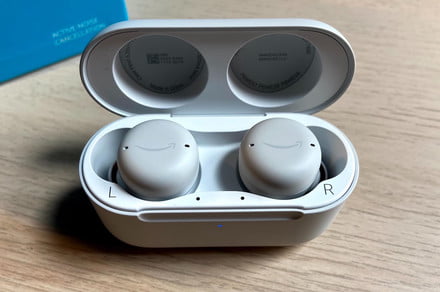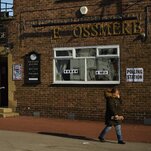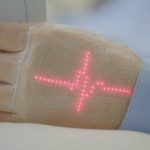The Ultimate Guide to Creating High-Converting Display Banner Ads in 2025
Display banner advertising remains one of the most effective ways to reach potential customers across the digital landscape. In 2025, the banner advertising industry continues to evolve with new technologies, creative formats, and targeting capabilities that make it more powerful than ever before. Whether you’re a small business owner looking to increase brand awareness or a marketing professional managing large-scale campaigns, understanding how to create high-converting banner ads is essential for digital marketing success.
The foundation of any successful banner campaign starts with understanding your audience and objectives. Before diving into design elements and technical specifications, you need to clearly define what you want to achieve. Are you looking to drive traffic to your website, increase brand awareness, generate leads, or promote a specific product or service? Your campaign objectives will directly influence every aspect of your banner design, from the visual elements to the call-to-action text.
Modern banner advertising has moved far beyond simple static images. Today’s most effective banners incorporate dynamic elements, personalization, and interactive features that engage users in meaningful ways. Rich media banners, HTML5 animations, and video banners are becoming increasingly popular because they capture attention more effectively than traditional static banners. However, it’s important to balance creativity with performance, ensuring that your banners load quickly and display properly across all devices and platforms.
Color psychology plays a crucial role in banner effectiveness. Different colors evoke different emotional responses and can significantly impact click-through rates. Red creates urgency and excitement, making it perfect for limited-time offers and sales promotions. Blue conveys trust and professionalism, ideal for financial services and technology companies. Green suggests growth and prosperity, often used in environmental and financial contexts. Orange combines the energy of red with the cheerfulness of yellow, creating a sense of enthusiasm and warmth.
Typography choices in banner design cannot be overlooked. The font you choose communicates as much about your brand as the words themselves. Sans-serif fonts like Arial, Helvetica, and Open Sans are generally more readable on digital screens and convey a modern, clean aesthetic. Serif fonts like Times New Roman and Georgia can add elegance and tradition but may be harder to read at smaller sizes. Custom fonts can help establish brand identity but should be used sparingly and always with web-safe fallbacks.
The banner size and format you choose will depend on where your ads will be displayed and your campaign objectives. Leaderboard banners (728×90 pixels) work well at the top of web pages for brand awareness campaigns. Medium rectangles (300×250 pixels) integrate well within content and often achieve high engagement rates. Skyscraper banners (160×600 pixels) provide ample space for detailed messaging and work well on desktop sites with sidebar placement.
Mobile optimization has become non-negotiable in banner advertising. With mobile traffic accounting for more than half of all web traffic, your banners must be designed with mobile-first principles. This means using larger fonts, simpler designs, and ensuring that interactive elements are easily tappable on touch screens. Responsive banners that automatically adjust to different screen sizes provide the best user experience across all devices.
Effective banner copy requires a delicate balance between being informative and concise. You typically have only a few seconds to capture a user’s attention and communicate your value proposition. Start with a compelling headline that addresses a specific need or desire. Use action-oriented language that creates urgency and encourages immediate response. Include social proof elements like customer testimonials, ratings, or usage statistics when space permits.
A/B testing is essential for optimizing banner performance. Test different design elements, copy variations, color schemes, and call-to-action buttons to determine what resonates best with your audience. Even small changes like button color or headline wording can result in significant improvements in click-through rates. Set up systematic testing schedules and always test one element at a time to isolate the impact of each change.
Ad placement and targeting capabilities have become increasingly sophisticated. Programmatic advertising platforms now offer precise audience targeting based on demographics, interests, browsing behavior, and even real-time intent signals. Geographic targeting allows you to focus on specific regions, cities, or even neighborhoods. Contextual targeting places your ads on websites and pages that are relevant to your products or services, increasing the likelihood of engagement from interested users.
Retargeting campaigns using banner ads can be particularly effective for converting previous website visitors who didn’t complete a desired action. These campaigns can display personalized banners featuring products the user viewed, abandoned cart reminders, or special offers designed to encourage return visits. Dynamic retargeting takes this a step further by automatically generating banners featuring the specific products or services each user showed interest in.
Performance measurement and optimization are ongoing processes in successful banner campaigns. Key metrics to monitor include click-through rate (CTR), conversion rate, cost per click (CPC), and return on ad spend (ROAS). However, don’t focus solely on clicks – consider view-through conversions and brand lift metrics that capture the broader impact of your banner advertising efforts.
Privacy regulations and cookie restrictions are reshaping how banner advertising operates. Marketers must adapt to new privacy-first approaches while maintaining campaign effectiveness. First-party data collection becomes increasingly important, and contextual targeting is experiencing a resurgence as an alternative to behavioral targeting methods that rely on third-party cookies.
The integration of artificial intelligence and machine learning in banner advertising is opening new possibilities for optimization and personalization. AI-powered creative optimization can automatically test thousands of banner variations to identify the highest-performing combinations. Dynamic creative optimization (DCO) can personalize banner content in real-time based on user characteristics and behavior patterns.
Looking ahead, the future of banner advertising will likely involve even more integration with emerging technologies. Augmented reality banners that allow users to visualize products in their environment, voice-activated banner interactions, and seamless integration with social commerce platforms are just a few of the innovations on the horizon. Staying informed about these developments and being ready to adapt your strategies will be crucial for maintaining competitive advantage in the evolving digital advertising landscape.










